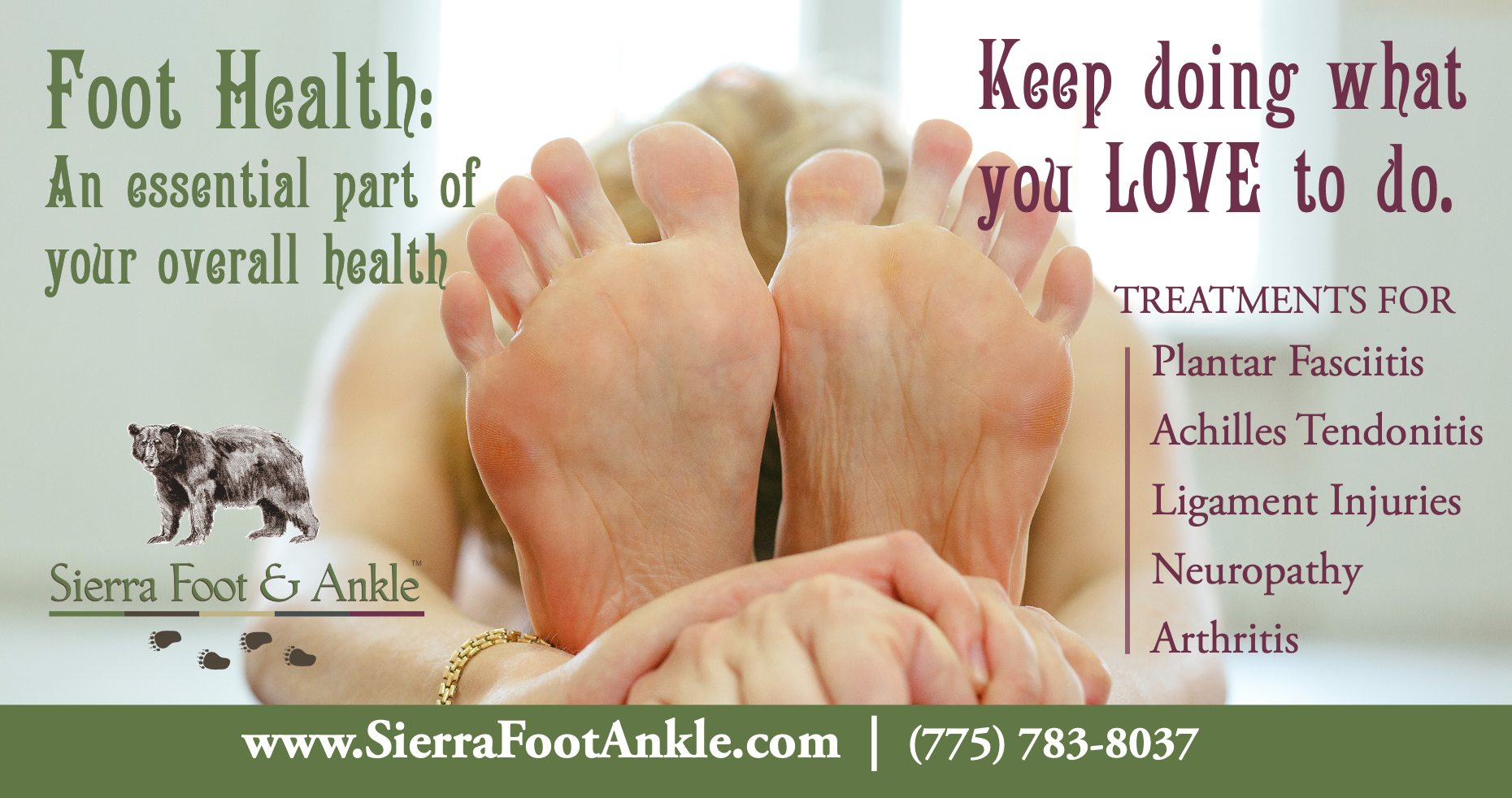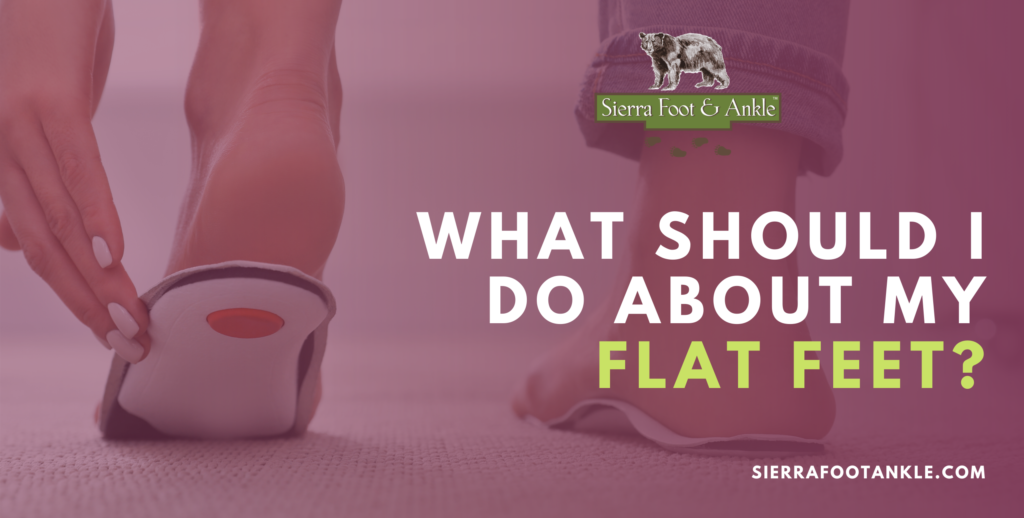What Should I Do About My Flat Feet?
Are your arches flat as a pancake? You may have more company in that category than you think.
A 2012 survey from the Institute for Preventative Foot Health found that about 12 percent of American adults had either naturally flat feet or fallen arches. Other studies have produced much higher figures, even up 25 to 30 percent.
While we don’t know the exact figures, we know flat feet are indeed very common. We see them at our office all the time! And while flat or collapsed arches can often lead to chronic or repeated pain and injury, others seem to manage with them just fine.
As a result, there is a lot of confusion among the general population about whether their flat feet are a problem, and what they should do about them. While we can’t fully answer those questions for you in a single blog post—you’ll have to stop by and see us for an individual evaluation—we can help you put the situation in context and give you some advice on next steps.
The Importance of Healthy Arches
So before you even figure out what to do about your flat feet—or if, in fact, you need to do anything at all—you may be wondering why arches are such a big deal in the first place. What do they really do for you, anyway?
As it turns out, lots of things. Some of the key roles your arches play include the following:
- Shock absorption. When you stand, walk, or run, you land with a ton of force on a very small area in a very short amount of time. Arches, due to their shape and flexibility, allow those impact forces to be dispersed over both a larger area and, crucially, a longer period of time. Just like the shocks in your car, this greatly reduces the wear and tear on other parts of your foot (and body).
- Efficient propulsion. When the arch flexes to absorb the impact, those forces don’t simply “disappear,” or dissipate out into nothingness. Essentially, the energy gets “stored” by the arches, which then releases that energy in order to assist you with your next step as you pull your heel off the ground. In other words, part of the impact force gets converted by your arches into forward propulsion, which reduces the amount of energy you have to generate yourself—especially when running. Think of it like a pogo stick, except one that releases forward instead of right back up.
- Biomechanical alignment. People with flat arches tend to overpronate when they walk—in other words, their ankles roll too far inward under force loads. The thing is, alignment issues tend not to stay in the feet. In order to compensate, joints and muscles in the legs and even back need to shift position and endure greater stress than they otherwise would.
The end result of all this is that people with flat arches are more prone to a variety of common ailments, including heel pain (especially plantar fasciitis), shin splints, and other various overuse injuries.
What Should I Do About My Flat Feet?
It’s important to clarify that there are many different types of flat feet. Perhaps your arch is flat all the time (rigid) or only when bearing weight (flexible). Perhaps you were born with flat feet, and your arches simply never formed. Or maybe you used to have very normal arches, but they’ve flattened over time as you’ve gotten older.
At the same time, symptoms can vary tremendously from person to person. Some people experience a ton of pain from their flat feet. Others seem to get by with no problems at all.
With so much variation, you can probably see that there’s no one perfect solution to every case of flat feet. What you choose to do about them will depend on your age, your symptoms, the type of flatfoot you have, and the lifestyle you want to live.
But that probably isn’t very helpful advice for you, so let’s break it down a bit.
If you are (or are the caregiver for) a child or adolescent:
Most kids won’t develop a mature arch until around age 5 or so. If they are still very young and don’t show any signs of pain or difficulty with mobility, it’s probably fine to wait.
That said, keep a close eye on your little one, and follow up with us if you notice that the arches are still flat after age 5-6, or they show any signs of pain or abnormal gait patterns.
The exception we want to guard against here is rigid flatfoot conditions such as tarsal coalition. Although relatively rare, this is a much more serious form of flat arches and is best treated during or before the early teen years, before bones fully mature.
If you are an adult with flat feet:
The main discriminating factor here is pain.
If your feet feel good, you have no obvious symptoms, and you’re able to enjoy whatever physical activities you like without being held back by pain or discomfort in your feet, ankles, legs, or back, you probably don’t need any treatment for your flat feet.
However, if you do have symptoms in your feet or elsewhere, there is a good chance your flat feet are at least partially to blame, and you should make an appointment with us for further examination and treatment.
It’s important to note that, even if you aren’t experiencing symptoms right now, you may still be more susceptible to certain kinds of injuries. So make sure you are treating your feet right, wearing proper shoe gear, and following safe training and exercise protocols at all times!
Treating Flat Feet
The most common treatment we recommend for adults with low or flat arches is orthotics.
You can think of orthotics as sort of like glasses or braces, except for your feet. If your flat arches aren’t absorbing impact forces as well as they should or are pulling the rest of your body out of alignment, orthotics can make up the difference.
The optimal pair will not only cushion your steps, but also realign and even retrain your joints and muscles to function in a way that causes less pain and wear and tear. In short, they will get your arches back to working like the springs they should be.
And our office is one of the best around at getting you the orthotics you need. Dr. Melhuish specializes in foot and ankle biomechanics, and we even have an on-site orthotics lab to customize and adjust orthotics as needed so that they can fit you best.
While orthotics are typically the first choice for symptomatic flat feet, there are sometimes severe cases when a surgical flatfoot correction is ultimately necessary. This is more often the case for either flat feet that have developed over time, or for certain types of hereditary flat feet that are more severe.
However, you can rest assured that orthotics, in combination with other nonsurgical strategies such as taping, strapping, and changes in shoe gear, can solve the vast majority of flatfoot cases. That’s especially true when you have a biomechanics expert like Dr. Melhuish on your side!
If you think you have flat arches and experience foot, leg pain (knee, hip) or back pain that’s keeping you from fully enjoying your activities, give us a call. It’s very likely we’ll be able to help you get back to doing what you love! Dial (775) 783-8037, or complete our contact form to request an appointment.
Get In Touch
Address
2350 South Carson St
Suite 3
Carson City, NV 89701
Contact
Call: (775) 783-8037
Fax: (775) 782-3787
OPT-IN To Text:
By texting our office at
(775) 783-8037 from your mobile phone, you are consenting to receive SMS text messages from our staff. Reply STOP to unsubscribe.
*Read our Privacy Policy & Terms and Conditions.
Social




© Sierra Foot & Ankle. All Rights Reserved. Privacy Policy.
Web Design by CP Solutions. Marketed by VMD Services.


